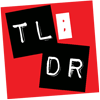Where was Jesus crucified?

"Two others, who were criminals, were led away to be put to death with [Jesus]. And when they came to the place that is called The Skull, there they crucified him, and the criminals, one on his right and one on his left." —Luke 23:32-33
All four gospel accounts of Jesus' crucifixion call the place "Golgotha" or the "place of the skull" (Matthew 27:33; Mark 15:22; Luke 23:33; John 19:17). John, Matthew, and Mark give us a few more clues about the nature of this location. John 19:20 tells us that it was "near the city," which probably means that it was not inside Jerusalem but outside its walls.
Mark 15:40 describes the place as visible from a distance, which could mean that it was elevated, such as on a hill or atop some structure. Both Matthew 27:39 and Mark 15:29 say the site was accessible to passers-by, which could mean that a traveling road or footpath was nearby.
Where exactly in our known world was Jesus crucified?
Do we know the exact location of Jesus' crucifixion today? Can we visit this place called Golgotha? The truth is that we can't really know for sure because Scripture provides no other specific locational information other than the city of Jerusalem and the locals' name for the place where people were crucified that day. Thus, we have another debate by those who are curious for an answer. The two most popular proposed sites for Jesus' crucifixion are the Church of the Holy Sepulchre and Gordon’s Calvary.
Traditionally, the Church of the Holy Sepulchre is believed to be the actual location, as it dates back to the early 4th century AD in the writings of Eusebius. Gordon’s Calvary was first suggested in the mid-19th century. We aren't here to tell you which one of these locations is "right," because there are plenty of good arguments on both sides. In fact, there are biblical archaeology scholars who have ideas for even more possible locations. Scroll down for some resources that present differing theories.
The problem with trying to pinpoint an exact location in the world as we know it today is that the city of Jerusalem has gone through considerable change over the last 2,000 years. Major portions of the city have been destroyed and rebuilt over time. It's hard to say precisely what Jerusalem's borders were in Jesus' time.
Ultimately, it doesn't matter where Christ was crucified. What matters is that He was crucified at all and what that sacrifice means to believers.
Even if we could figure out where exactly Jesus was crucified, there's no biblical basis for revering the place as holy. We will find no extra spiritual power or blessings in either the location where He died or where He was buried and resurrected. We would be no closer to Jesus in those spaces than we would be right where we are at this moment. What's important to hold onto is the fact that Jesus was indeed crucified, buried, and resurrected (1 Corinthians 15:3-4). That is what we can know for sure and what we can hold dear.
ALSO SEE:
- Does archaeology support the Bible?
- What are the last seven sayings of Christ?
- On what day of the week was Jesus crucified?
- Did Jesus really die?
- What is Good Friday?
- Is the resurrection of Jesus true?
- Why is the resurrection important?
- Golgotha: A Reconsideration of the Evidence for the Sites of Jesus’ Crucifixion and Burial
- The Real Calvary and the Real Holy Sepulcher
- The Church of the Holy Sepulcher vs. The Garden Tomb


TL;DR
All four gospel accounts of Jesus' crucifixion call the place "Golgotha" or the "place of the skull" (Matthew 27:33; Mark 15:22; Luke 23:33; John 19:17). Other biblical clues specify that it was near Jerusalem, visible from a distance, and accessible to passers-by. While biblical scholars have proposed two major sites the Bible may have referred to (the Church of the Holy Sepulchre and Gordon’s Calvary), the location of Jesus' crucifixion is up for debate. Even if we could figure out the exact location, we would be no closer to Jesus there than we would be right where we are at this moment. What's important is the fact that Jesus was indeed crucified, buried, and resurrected (1 Corinthians 15:3-4).

Writer & Managing Editor: Catiana (Cat)
Cat is the web producer and managing editor of 412teens.org. She is known as "412teens" on the 412teens Discord. She loves audiobooks, feeding the people she cares about, and using Christmas lights to illuminate a room. When Cat is not cooking, gardening, or practicing creativity, she enjoys spending time with her two adult kids, six socially-awkward cats, and her amazing friend-amily.
